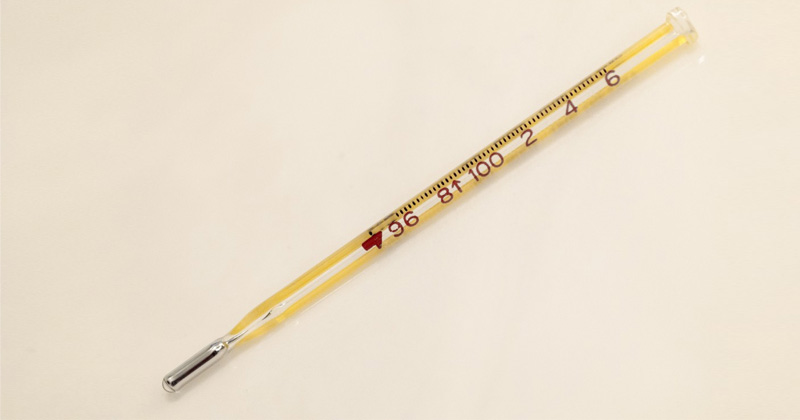Everyone has used a mercury thermometer whenever we felt a little under the weather. It shows us how hot our body is, in literal terms, of course. The thermometer uses mercury to measure the temperature, but do you know Why Is Mercury Used In Thermometer? Let us explain.

If you have to measure the body temperature, you will use either a digital thermometer, a laser thermometer, or a forehead strip. All are safe and provide accurate measurements. The most commonly used thermometers nowadays are digital.
However, there was a time when mercury thermometers were the only and most reliable way of measuring body temperature. We all know mercury is toxic, and yet we took temperature measurements with the mercury thermometers all our lives. But why is mercury used in thermometers?
There has to be a special property that mercury possesses, which cannot be found in any other element in the world. Let’s find out.
Mercury thermometer is a glass thermometer filled with mercury as the measuring liquid. It’s enclosed in an airtight capillary. This thermometer can measure temperatures in the ranges of -30 to +300 ° C.
Higher temperatures up to 800 ° C can be achieved with additional internal pressure of 10 MPa, for example, using gases such as nitrogen, argon or carbon dioxide that help prevent the mercury from evaporating. These usually have industrial applications.
The thermometer consists of a thin riser tube, the capillary, and a container at the lower end. It is filled with several 100 milligrams of mercury. This extraordinary metal is liquid at room temperature. In contrast to other metals, mercury only solidifies below minus 39 degrees Celsius because of the weak bond between the atoms. That is why mercury is used in thermometers.

When two bodies touch, their temperature adjusts, which means that the colder gets warmer, the warmer gets colder. This continues until they are warm. When put under the armpit, the mercury in the clinical thermometer, therefore, becomes warmer and expands.
Suggested Read: What is The Color of The Sun?
It rises in the capillary until the thermal equilibrium is reached. In contrast, our body hardly changes its temperature because it is so much larger than the thermometer.
There is a constriction down in the thermometer capillary through which the mercury has to pass. After the temperature measurement, the mercury contracts again in the colder air. But it cannot easily go back into the waste container.
The narrowing glass separates the mercury thread from the rest of the liquid. This way, the cut-off liquid thread remains in the tube and gives accurate temperature measurements. The temperatures are written on a scale printed on the outside of the thermometer capillary.
In order to measure the temperature again, the capillary must be emptied. To do this, you need to shake the tube, and the centrifugal force will get the mercury back into the vessel.
If the thermometer breaks in the mouth, it would not be your stomach that would suffer because mercury is not absorbed anywhere in the digestive tract or even stomach.
Though it is toxic and harmful to the lungs if inhaled. Due to its strong toxicity, the use of mercury thermometers today is usually restricted to the scientific and industrial fields. It can be partially replaced by colored alcohol or Galinstan or electronic thermometers.
Now you know Why Is Mercury Used In Thermometer. Mercury thermometers were an integral part of every household across the globe for several decades until the new digital and laser thermometers came in. They will always be associated with a childhood memory for many as a magical liquid inside a glass bottle that helped us make sure that we took a day off from school.


